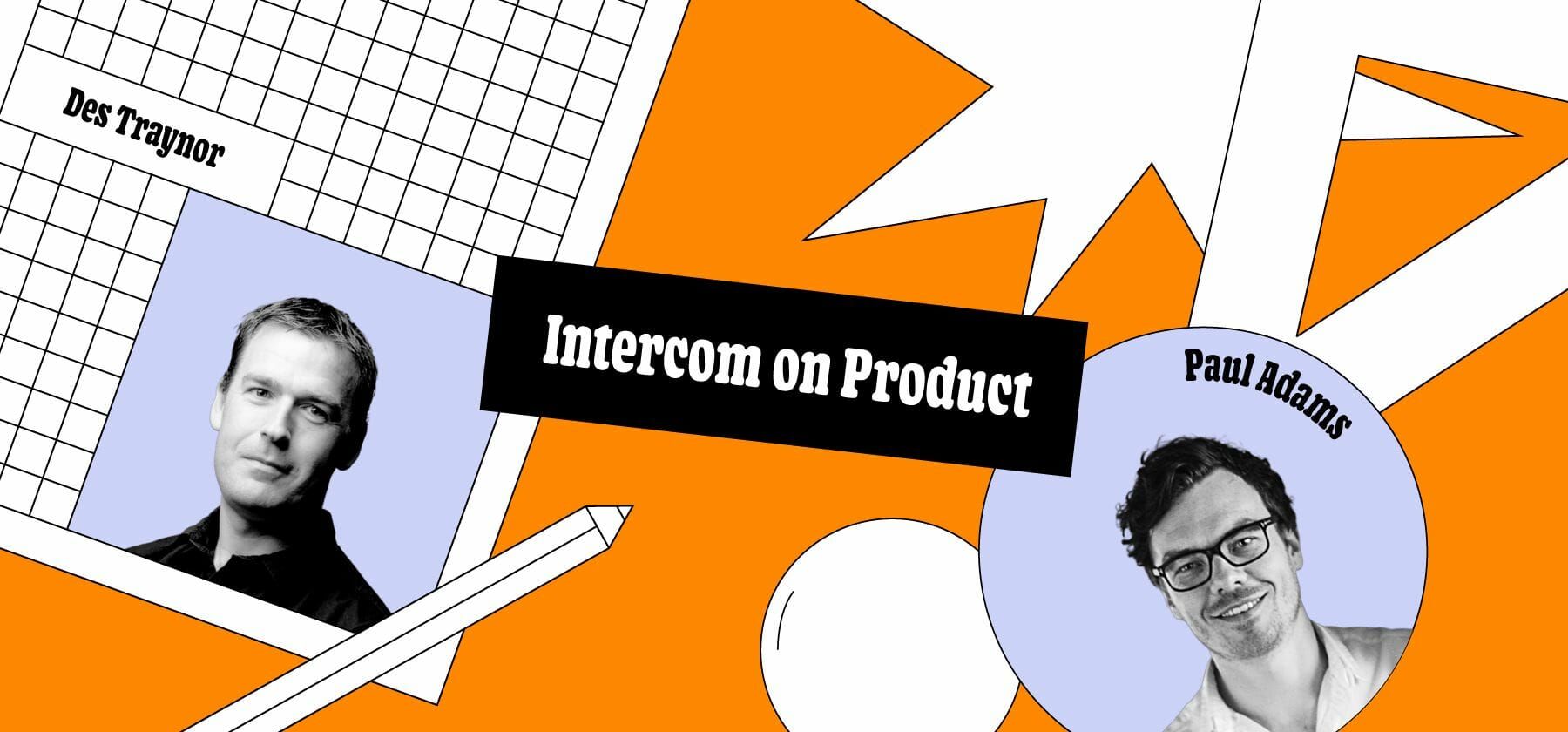
Introducing Intercom on Product, our brand new podcast series
We’re excited to announce the launch of our latest series, focusing on all things product.
On this podcast, I’m going to be getting behind the mic regularly with Paul Adams, our SVP of Product, to share our latest thoughts on how to build a great product. Over the time we have worked together, Paul and I have had countless conversations about things like how to run a product org at scale, how to balance customer feedback on your product roadmap, how to spread a product-first mentality throughout a company, how to maintain design excellence in a fast growing R&D team, and so much more.
“If you’re a designer, product manager, engineer, researcher or anything in between, we think you’ll find these conversations really valuable”
In this series, we’re going to begin sharing some of these discussions with you on a regular basis, covering everything from industry trends, what’s hot right now, all the way through to things like how we’re embracing the rise of automation. So if you’re a designer, product manager, engineer, researcher or anything in between, we think you’ll find these conversations really valuable.
You can listen to our full conversation above, or read a quick summary of our conversation below.
If you enjoy the conversation and don’t want to miss the rest of the series, you can subscribe on iTunes or Google Podcasts, stream on Spotify or Stitcher, or you can grab the RSS feed in your player of choice.
Why a “quality bar” is actually a “quality zone”
Every business has a challenge in front of them – to create the best product they’re capable of making. As part of this process, product managers, designers and engineers inevitably must ask themselves: Does the work meet our standards? Is it good enough to ship?
“We operate within a ‘zone’ which acknowledges that there’s a scale of acceptability in product quality”
At Intercom, we’ve begun to reject the notion of a quality “bar” (which implies a single line between acceptable and unacceptable). Instead, we operate within a “zone,” which acknowledges that there’s a scale of acceptability in product quality, depending on the circumstances. That allows us to be smarter about where we’re committing our effort.
Pattern libraries set your standards
One way to mitigate the tension between high standards and limited bandwidth is to create a pattern library for product designs. This allows a minimum viable standard at scale – which can then be even further improved upon depending on the importance of the feature.
Don’t mistake output for outcome
Many companies mistake output for outcome. It’s natural for the day you ship to be a celebratory one. Your team’s hard work has finally come to fruition, and there’s elation and relief at getting the project over the line.
But in reality, launch day tells you very little about whether the product or feature is a success. That only becomes clear over time.
Have a conversation with the market
In order to get clarity around that success, you often have to look beyond two-dimensional metrics and work harder to understand to your customers. Through qualitative (not quantitative) feedback, they’ll reveal what’s truly valuable to them.
“A product is effectively a conversation with the market, and your launch is like your opening gambit”
As Marc Andreessen put it recently, a product is effectively a conversation with the market, and your launch is like your opening gambit. The conversation only gets going after the market replies, and that’s when it comes down to whether you’re a good conversationalist.
Humility is key to improving your product
In this paradigm of being a good listener and conversationalist, it’s essential to maintain humility.
Ego is one of the biggest threats to improving a product, so your company must create a safe space for anyone at any level of the organization to raise their hand and say, “We got that wrong; we’re going to try again.”






